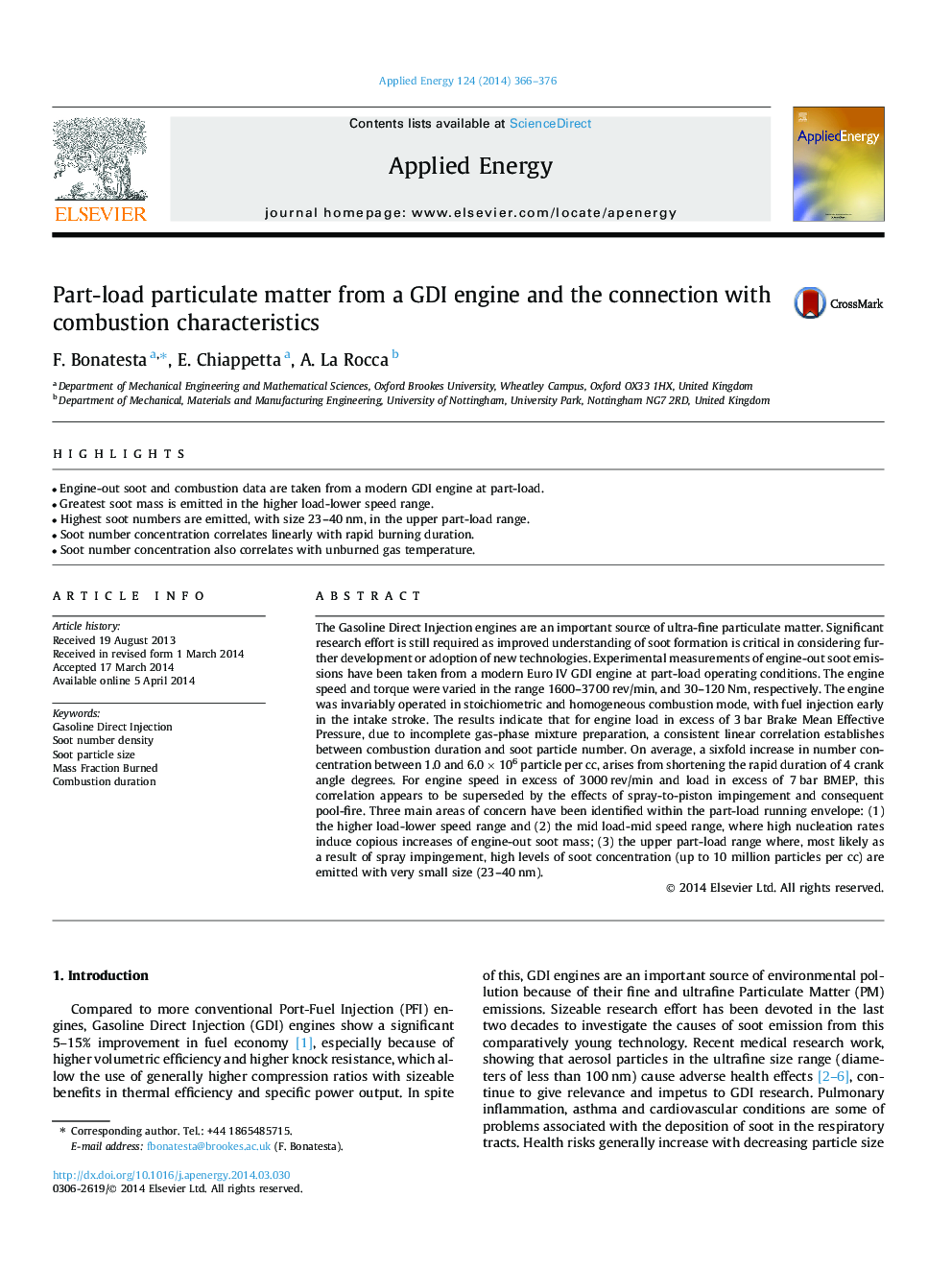| کد مقاله | کد نشریه | سال انتشار | مقاله انگلیسی | نسخه تمام متن |
|---|---|---|---|---|
| 242840 | 501903 | 2014 | 11 صفحه PDF | دانلود رایگان |

• Engine-out soot and combustion data are taken from a modern GDI engine at part-load.
• Greatest soot mass is emitted in the higher load-lower speed range.
• Highest soot numbers are emitted, with size 23–40 nm, in the upper part-load range.
• Soot number concentration correlates linearly with rapid burning duration.
• Soot number concentration also correlates with unburned gas temperature.
The Gasoline Direct Injection engines are an important source of ultra-fine particulate matter. Significant research effort is still required as improved understanding of soot formation is critical in considering further development or adoption of new technologies. Experimental measurements of engine-out soot emissions have been taken from a modern Euro IV GDI engine at part-load operating conditions. The engine speed and torque were varied in the range 1600–3700 rev/min, and 30–120 Nm, respectively. The engine was invariably operated in stoichiometric and homogeneous combustion mode, with fuel injection early in the intake stroke. The results indicate that for engine load in excess of 3 bar Brake Mean Effective Pressure, due to incomplete gas-phase mixture preparation, a consistent linear correlation establishes between combustion duration and soot particle number. On average, a sixfold increase in number concentration between 1.0 and 6.0 × 106 particle per cc, arises from shortening the rapid duration of 4 crank angle degrees. For engine speed in excess of 3000 rev/min and load in excess of 7 bar BMEP, this correlation appears to be superseded by the effects of spray-to-piston impingement and consequent pool-fire. Three main areas of concern have been identified within the part-load running envelope: (1) the higher load-lower speed range and (2) the mid load-mid speed range, where high nucleation rates induce copious increases of engine-out soot mass; (3) the upper part-load range where, most likely as a result of spray impingement, high levels of soot concentration (up to 10 million particles per cc) are emitted with very small size (23–40 nm).
Journal: Applied Energy - Volume 124, 1 July 2014, Pages 366–376